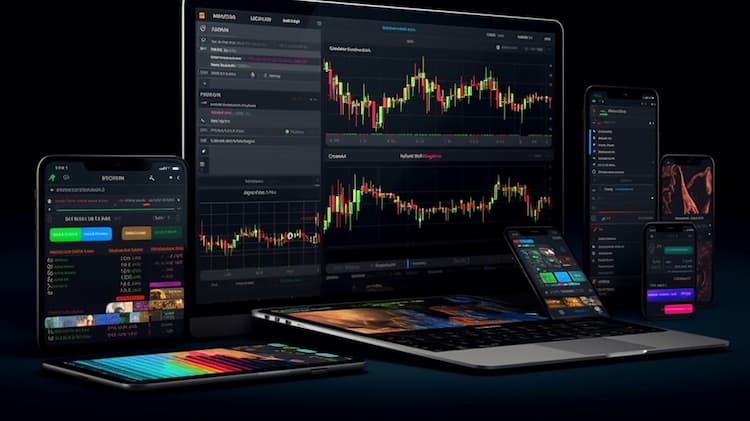
What are the best technology ETFs
If you're looking to invest in the energy sector, Energy Exchange-Traded Funds (ETFs) can be a great option. Energy ETFs allow investors to gain exposure to a diversified portfolio of energy-related companies, including those involved in oil, natural gas, renewable energy, and utilities. In this article, we will explore some of the best Energy ETFs available, highlighting their performance, holdings, and key features to help you make informed investment decisions.
Understanding Energy ETFs and their Benefits
Energy exchange-traded funds (ETFs) offer investors exposure to the energy sector, allowing them to participate in the performance of various energy-related companies. These ETFs can include stocks of companies involved in oil, natural gas, renewable energy, and other energy-related industries. Investing in energy ETFs can provide diversification, liquidity, and cost-effectiveness compared to investing in individual stocks. One notable energy ETF is the Energy Select Sector SPDR Fund (XLE).
Comparing Energy Select Sector SPDR Fund (XLE) with Similar ETFs
The Energy Select Sector SPDR Fund (XLE) is one of the most well-known energy ETFs. It aims to track the performance of the Energy Select Sector Index, which includes large-cap companies in the energy sector. XLE's top holdings typically consist of companies engaged in oil and gas exploration, production, and refining.
When comparing XLE with similar ETFs, investors may consider the iShares U.S. Energy ETF (IYE) and the Vanguard Energy ETF (VDE). IYE tracks the Dow Jones U.S. Oil & Gas Index and includes a broader range of energy-related companies, including integrated oil companies, oilfield services providers, and pipeline operators. VDE seeks to track the performance of the MSCI US Investable Market Energy 25/50 Index and offers exposure to a diverse range of energy companies, including both U.S. and non-U.S. firms.
Each of these ETFs has its own advantages and considerations. XLE may be suitable for investors seeking exposure primarily to large-cap U.S. energy companies. IYE offers a broader selection of energy companies, including smaller-cap stocks. VDE provides a mix of U.S. and non-U.S. energy companies, potentially diversifying geographic risk. Investors should carefully analyze the underlying holdings, expense ratios, and historical performance of these ETFs before making an investment decision.
 XLE overlap What are the best Energy ETFs?
XLE overlap What are the best Energy ETFs?
What Factors to Consider When Choosing Energy ETFs?
Diversification: Look for ETFs that offer exposure to a diversified range of energy companies across different sectors, including oil, natural gas, renewable energy, and utilities. Diversification helps mitigate specific risks associated with individual companies or subsectors.
Expense Ratio: Consider the expense ratio, which represents the annual fee charged by the ETF issuer. Lower expense ratios can contribute to higher investment returns over time.
Liquidity: ETFs with higher trading volumes tend to have tighter bid-ask spreads, making it easier for investors to buy or sell shares at a fair price. Adequate liquidity ensures efficient trading.
Performance: Assess the historical performance of the ETF, including its returns and volatility. Compare the ETF's performance against its benchmark index and similar funds to gauge its consistency and risk-adjusted returns.
Are Energy ETFs Suitable for Your Portfolio?
The suitability of energy ETFs in your portfolio depends on your investment goals, risk tolerance, and overall asset allocation strategy. Energy ETFs can be a suitable addition for investors seeking exposure to the energy sector or those looking to diversify their portfolios. However, it's important to note that the energy sector can be volatile, influenced by factors such as commodity prices, geopolitical events, and environmental regulations.
As with any investment decision, it is crucial to conduct thorough research, consult with a financial advisor if necessary, and carefully consider your investment objectives and risk tolerance before investing in any specific ETF or sector.
Conclusion
Energy ETFs offer investors an opportunity to gain exposure to the energy sector, diversify their portfolios, and potentially capitalize on the performance of energy-related companies. When choosing an energy ETF, consider factors such as diversification, expense ratio, liquidity, and historical performance. Carefully evaluate different ETFs, such as the Energy Select Sector SPDR Fund (XLE), iShares U.S. Energy ETF (IYE), and Vanguard Energy ETF (VDE), to determine which one aligns best with your investment objectives and risk tolerance.
Disclaimer: This article is for informational purposes only and does not constitute financial or investment advice. The information provided is not intended to be a recommendation or endorsement of any particular investment or investment strategy. The author is not providing any investment advisory services. Please consult with a qualified investment advisor or conduct your own research before making any investment decisions.
XLE ETF issuer
XLE ETF official page
XLE ETF issuer
XLE ETF official page
FAQ
What are Energy ETFs?
Energy ETFs are exchange-traded funds that focus on companies operating in the energy sector. These funds typically invest in energy-related industries such as oil, gas, renewable energy, utilities, and energy equipment and services.
What factors should I consider when evaluating Energy ETFs?
When evaluating Energy ETFs, consider factors such as the fund's expense ratio, tracking error, liquidity, underlying index or strategy, diversification within the energy sector, and the fund's historical performance.
Which Energy ETFs track the performance of renewable energy companies?
Some Energy ETFs focus specifically on renewable energy companies. Examples of such ETFs include the Invesco Solar ETF (TAN), First Trust Global Wind Energy ETF (FAN), and iShares Global Clean Energy ETF (ICLN).
What are some popular Energy ETFs?
Popular Energy ETFs include the Energy Select Sector SPDR Fund (XLE), Vanguard Energy ETF (VDE), iShares U.S. Energy ETF (IYE), and SPDR S&P Oil & Gas Exploration & Production ETF (XOP).
Are there any leveraged or inverse Energy ETFs available?
Yes, there are leveraged and inverse Energy ETFs available for investors seeking amplified or inverse exposure to the energy sector. Examples include the ProShares Ultra Oil & Gas ETF (DIG) for leveraged exposure and the ProShares UltraShort Oil & Gas ETF (DUG) for inverse exposure.










